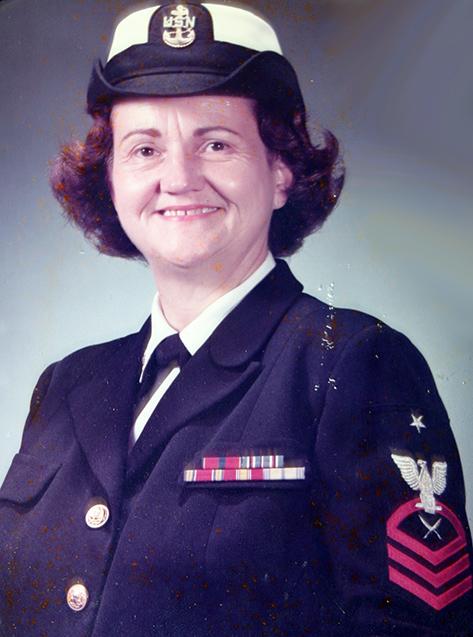
Black WAC Joined to Be What She Wanted to Be
By Rudi Williams - American Forces Press Service
WASHINGTON -- Catherine L. Bowie watched her three brothers go off to war in 1942 and decided a year later to get into the fight, too. Later, when her brothers went home, she liked the Women's Army Corps and stayed.
Asked about her military career of more than 24 years, the 86-year-old Bowie quipped, "Well, I can't remember much today. Yesterday, I knew everything."
The first thing she recalled was the Army sending her to cook and baker school. "I changed their minds," she said. "They asked me, 'Why don't you want to cook?' I told them, 'Because I have an associate's degree, and I don't intend to cook for the rest of my military career.'"
Bowie knew exactly what she wanted to be, and that meant focusing on administrative and recruiting assignments throughout her career. The times when the Army wanted her to be a drill sergeant, she said, she volunteered for duty in Germany, Korea or Okinawa or for a recruiting job. An administrative specialist, Bowie worked in re-enlistment and separations on Okinawa and other administrative jobs in Germany and Korea.
The recruit training environment left her cold, she said, but recruiting ironically struck her fancy. And she loved recruiting duty in Chicago.
African American Women in Military Service
WASHINGTON -- When the Army established the Women's Army Auxiliary Corps in 1942, only 40 African American women were allowed to join.
They were dubbed the "10 Percenters" because their numbers in the Army matched the percentage of African Americans in the national population. Forty African American women and 400 white women were the first to train at Fort Des Moines, Iowa.
Black enlisted women served in segregated units, participated in segregated training, lived in separate quarters, ate at separate tables in mess halls and used segregated recreation facilities. African American women officers trained in integrated units, but lived under the same kind of segregated conditions as the enlisted black women.
Specialist and technical training schools were integrated in 1943. During the war, 6,520 black women served in what became the Women's Army Corps. African American women were barred from the Navy service until Oct. 19, 1944; of the more than 80,000 women in Navy blue during World War II, only 72 were African Americans.
Only five African American women signed up when the Coast Guard opened its auxiliary to blacks on Oct. 20, 1944.
Following World War II, racial and gender discrimination and segregation persisted in the military. By June 1948, only 125 African American women served in the WAC, four officers and 121 enlisted.
That's how things were until President Truman integrated the armed forces by signing Executive Order 9981 on July 26, 1948. WACs began integrated training and living in April 1950.
"I like people and get along with them reasonably well," she said. Her philosophy is not to force her opinions on anyone but to let them form their own. "Eventually they'll say, 'well, but somebody said … ,'" Bowie said. "I'd tell them not to listen to everything people tell them. They should get the facts before they make up their own mind."
In the Army of the 1940s, African American enlisted women served in segregated units; lived, ate and played in segregated facilities; and trained segregated classes. Racism and discrimination didn't bother her much, she said, because she didn't have time for them. She'd hear racist remarks made around her, but she wouldn't "hear" them.
"I had three brothers overseas getting shot at, so I didn't have time to worry about what they said," Bowie said. "As long as they went on their way and tended to their own business, it didn't bother me much."
Bowie said she tolerated racism and discrimination because that's how things were when she was born on Oct. 18, 1913, in Longview, Texas, a farming and railroad junction town with a population of about 5,500. She was 30 and living in Dallas when she joined the Army on Sept. 1, 1943.
After retiring from the Army on Sept. 30, 1967, Bowie became a professional shopper in Texas and California. She spent companies' money on all kinds of merchandise while security personnel checked the honesty of store cashiers. Her ability to get along with other people, enhanced by recruiting duty, helped her get the job, she said.
"I used to be talkative -- never met a stranger," Bowie noted. "I started looking around in stores and shopping, and the next thing I knew, I had a job."
Being a recruiter is also how she found out about the Soldiers' and Airmen's Home in Washington. "Most people don't pay attention to the 50 cents per month being taken out of their pay to support the retirement home," Bowie said. "Many retirees don't think about the home being available for them.
"Being a recruiter, I had to know about the retirement home," she pointed out. "When you're trying to sell somebody something, you tell him or her about all their benefits." She used to visit friends living at the home, and in 1993, decided to become a resident.
"I've enjoyed my time here and I enjoyed everything about my service, even 'GI party' night," she said.
Bowie said she doesn't do much anymore, except shopping and going to church. "I love our minister because he's tall and filled out," she joked. "I love flowers and working with plants in the home's garden plots. I don't do that anymore, but I like to look at other people's gardens."
- Log in to post comments
